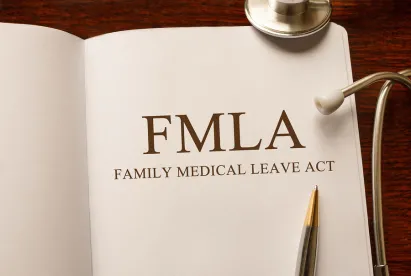Last week, the Department of Labor (“DOL”) issued updated Family and Medical Leave forms and notices for employers to use in administering federal Family and Medical Leave Act (“FMLA”) obligations. The documents are not mandatory; instead they are suggested forms for employers to use in their FMLA compliance process. At the outset, it should be noted that these new forms and related DOL guidance do not reflect employers’ State law responsibilities. Because of the need for employers to coordinate the leave eligibility and availability differences between the Wisconsin and Federal FMLA laws, we recommend that forms used by Wisconsin employers incorporate rights and responsibilities under both sets of FMLA laws. This may be best accomplished by creating individualized forms for that purpose.
Many of the changes suggested by the DOL are stylistic but some are responsive to difficulties encountered in FMLA administration. One point made clear in the updated information is that employers do not have a right to require a Health Care Provider Certification where the FMLA leave is taken to bond with a healthy newborn or a child placed for adoption or foster care. The employer is permitted to obtain a Health Care Provider Certification related to the disabling condition associated with childbirth, but not for FMLA leave solely for bonding purposes.
There are several additions in the forms that employers may want to consider incorporating into their individually designed documents. For example, the new Health Care Provider Certification asks the Health Care Provider to provide a “best estimate” of how long the serious health condition “lasted or will last.” The document also incorporates the Federal regulatory requirement for an employee having a chronic condition to be treated for the condition two times per year in order to qualify for FMLA eligibility.
The Certification form, however, still lacks the specificity necessary for employers to fully evaluate the requirement that the employee is “incapable” of performing the requirements of his or her job. The absence of information on the manifestation of the condition and the actual medical facts may leave an employer with insufficient information to determine the ability of the employee to perform the employee’s job. Although the form asks for “other appropriate medical facts” on the third page, since particular medical facts are not requested earlier, it is unclear whether that will be of any value.
The Notice of Eligibility and Designation forms have also been revised by the DOL. The Notice of Eligibility continues to be confusing as it relates to the timing of when an employee must return the completed Health Care Provider Certification to the employer. Under 29 CFR 825.313b, the employee has 15 days from the time the employee receives the certification, not from the time the employer sends it to the employee. The new form fails to make clear when the 15-day period to provide the certification to the employer begins to run. The new Designation Notice includes helpful language that incorporates 2019 DOL guidance instructing employers in all instances to designate qualifying leave as FMLA even if the employee/employer does not want to apply the law. Another positive addition is the section that allows an employer to detail how paid leave will run concurrently with FMLA leave. Significantly, the Notice imposes an obligation on the employer to specifically outline what information is needed to cure an incomplete or insufficient certification. On the negative side, the form continues to lack language defining an employee’s call-in obligation. We recommend that if an employer has specific call-in procedures, including when the employee is using FMLA, that the employer modify the form to include the call-in requirement replacing the language that states the employee should notify the employer “as soon as practicable if the dates of scheduled leave change, are extended or were initially unknown.”
The DOL is now seeking input from employers on potential changes to the FMLA regulations. The agency is seeking employer comments through a request for information. Employers desiring to provide input must submit their comments by September 16, 2020.




 />i
/>i

